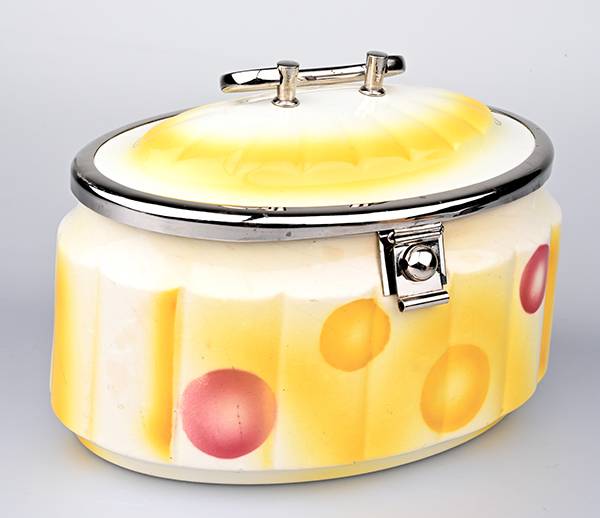
Air-brushed decoration, created using an air-brush and stencils.
Air-brushed decoration in CERAMICA CH
Stencilled decoration in CERAMICA CH
The first air-brushed patterns were created around 1900 using a so-called aerograph or atomizer. The patterns thus achieved were particularly popular between 1918 and 1933 (cf. Anthonioz 2019). They were often applied using stencils (see stencilled decoration).
Translation Sandy Haemmerle
German: Spritzdekor (Spritzpistole)
French: décor vaporisé. Si le décor tacheté est réalisé avec un instrument mécanique (p. ex. vaporisateur, pulvérisateur, aérographe, pinctographe, aérostyle, chromographe), on parle alors d’un décor par pulvérisation ou d’un décor par insufflation ou encore d’un décor pointillé, poudré, tamponné, soufflé, fouetté ou tapoté.
References:
Anthonioz 2019
Stanislas Anthonioz, À la table de lárt moderne. Céramique de la République de Weimar (1919-1933), Genf 2019.
Blondel 2001
Nicole Blondel, Céramique, vocabulaire technique, Paris 2014, 308, 344.
Heege 2016
Andreas Heege, Die Ausgrabungen auf dem Kirchhügel von Bendern, Gemeinde Gamprin, Fürstentum Liechtenstein. Bd. 2: Geschirrkeramik 12. bis 20. Jahrhundert, Vaduz 2016, bes. 88-89.

